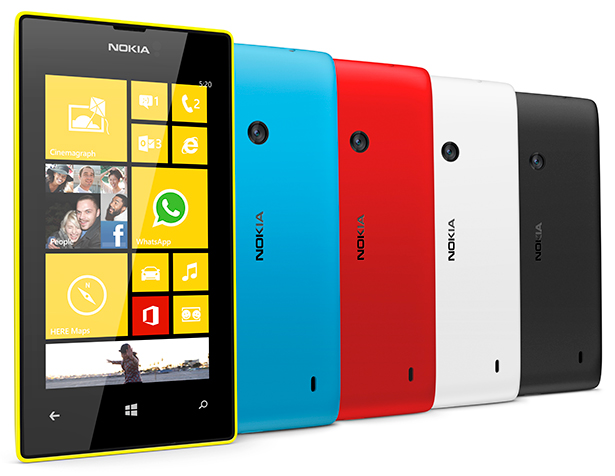Windows Phone Has Become a Haven For Budget, 'Low Memory' Smartphones
Everyone loves to pick on Apple for saddling its smartphones with only 1GB of RAM (even the flagship iPhone 6 Plus is limited to just 1GB when most Android flagships are packing three times a much memory). However, Microsoft just reminded us of that its most popular smartphones are running on a mere 512MB of RAM (or less).
In a blog posting last week, Microsoft provided some insight into the latest trends for the Windows Phone platform though November 2014. Some of the numbers weren’t very surprising at all. Windows Phone 8.1 now accounts for 65 percent of all traffic through the Windows Phone store, while legacy devices running Windows Phone 7.x make up than less than 5 percent of traffic.

But what’s perhaps most interesting is the staggering number of “low memory” devices that make up the bulk of the Windows Phone 8.1 market. By Microsoft’s definition, “For Windows Phone 7.x devices a low-memory device is defined as 256MB or less of RAM, but on 8.x devices low-memory is 512MB or less of RAM.”
A whopping 71 percent of Windows Phone devices are classified as low memory devices, with the remainder having at least 1GB of RAM at their disposal. Given that such a large proportion of devices have just 512MB to work with, Microsoft is calling on developers to optimize their apps to run on these devices.

Microsoft even suggests that app developers create more clutter in the Windows Phone store and devote more resources to cater to this market by “creating a version with lower memory requirements to offer alongside your primary apps.”
It should come as no surprise that part of the reason for this increased emphasis on low-memory devices is due to the popularity of cheap smartphones like the Nokia Lumia 520. The Lumia 520, which was introduced in early 2013, has been offered for as little as $19.99 in recent weeks. The Lumia 520 has nearly 30 percent of the total Windows Phone market and far outpaces the reach of the next closest model, the Lumia 530, with roughly a 10 percent share.
When it comes to the high memory devices, the Lumia 920 tops the list, but it still has less than 5 percent of the overall Windows Phone market. The Lumia 920 was first released over two years ago (November 2, 2012) and features 1GB of RAM.
It also doesn’t help that it seems as though Microsoft has mainly released budget and mid-range smartphones over the past year (Lumia 530/535, Lumia 630/635, Lumia 730/735, and Lumia 830). Windows Phone buyers don’t have much to choose from when it comes to fresh, bleeding edge hardware, and this is the end result – a platform that seems to be all about the race to the bottom.

